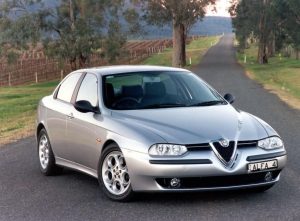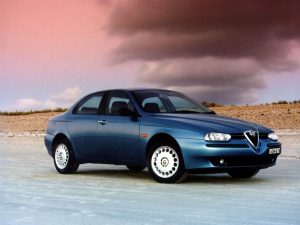Recalls: Alfa Romeo 156 sedan
Overview
Manufacturers, or importers, issue recalls for defects or faults which have the potential to cause injury. Generally, manufacturers will inform the original buyers if their vehicle is subject to a recall and of the steps required to remedy the defect or fault. Please note that the recalls below (if any) are for Australian-delivered vehicles only. Furthermore, the number of recalls should not be taken as an indication of a model’s reliability or its safety more generally.
Recalls: Alfa Romeo 156 sedan
No recall information is available for the Alfa Romeo 156 sedan. To search for recalls of Alfa Romeo models, please visit Product Safety Recalls Australia: Alfa Romeo.
Problems and faults: Alfa Romeo 156 sedan
Overview
This section identifies potential problems, causes and fixes based on the experiences of owners and repairers, online sources and technical service bulletins. This information is provided solely for reference purposes and AustralianCar.Reviews recommends that only properly qualified persons carry out repairs or modifications. Furthermore, the number of items below should not be taken as an indicator of a model’s reliability or the frequency with which they may occur.
To report a problem or fault to the AustralianCar.Reviews team, please use the Contact Us form. Note that AustralianCar.Reviews does not offer advice on automotive problems or disputes; such enquiries will not receive a reply. For vehicles purchased from dealers after 1 January 2011, please see our Australian Consumer Law fact sheet.
Twin Spark engine: timing belt failure and change interval
For the 2.0 Twin Spark engine, the timing belts were susceptible to failing prematurely and causing serious engine damage. In November 2006, the change over interval was changed from every 72,000 miles to 36,000 miles/60,000 kilometres, or every three years (whichever comes first). It is also recommended that the water pump be changed at the same time since the impellers are made of plastic and may crack.
Twin Spark engine: variable idle and clatter
- A fluctuating idle speed may be due to a malfunctioning idle actuator (which requires replacement), an air leak around the inlet manifold or the throttle cable may have been dislodged when cleaning the throttle body. For the latter, resetting the engine control unit (ECU) may be required to restore proper idle.
- A clattery or diesel-like idle on start up and reduced performance may be due to the variator – which regulates camshaft timing – failing.
Alfa Romeo 156: suspension noises
- A knocking noise when driving over bumps may be due to the track rod end bushes of the steering rack wearing. Since the bushes are not available separately, the steering rack itself requires replacement. If ignored, steering response will lose precision.
- Squeaking noises may come from the front suspension when driving over speed bumps. If so, the upper front wishbone bushes may require greasing or the wishbones may need to be replaced.
- Squeaking noises or excessive movement from the rear suspension may indicate that the rear suspension bushes are worn – these require replacement and could cause damage to the rear subframe.
- Clunking noises from the rear suspension may indicate that the bolts in the aluminium suspension components have not been tightened, causing the bushes and mounting points to wear.
Alfa Romeo 156: front tyre wear
Excessive front tyre wear – including the inside edges – may be due to the front suspension being out of alignment, although the strut top bearings may also be worn.
Alfa Romeo 156: bonnet release mechanism
The bonnet release mechanism is greased from new, such that it picks up debris over time. As a result, the primary latch may cease to function and only the secondary latch engages. In other countries, there were reports of the bonnet flipping and smashing into the windscreen. Foreign recalls were issued which involved degreasing, cleaning and refitting the existing mechanism. Later Alfa Romeo 156 models had a plastic catch instead of a steel one, though this did not entirely resolve the problem. Owners are therefore advised to shut the bonnet firmly and pull on the leading edge to ensure that it is shut securely; WD40 can also be used to clean the mechanism.
Alfa Romeo 156 sedan: other problems and faults
- The front right solid brake pipe is susceptible to corrosion between the inner wing and the cambelt cover, where there is a clip around the pipe and a lack of protective plastic coating. The section of pipe is not visible such that the owner may need to feel along the pipe to detect any corrosion. If the pipe cracks or leaks, the braking function will be severely limited.
- In cold weather, a clicking noise from the passenger side of the dashboard may be due to the captive nuts on the front dash mounts vibrating – this may be fixed by applying sealant around the nut or using rubber washers.




